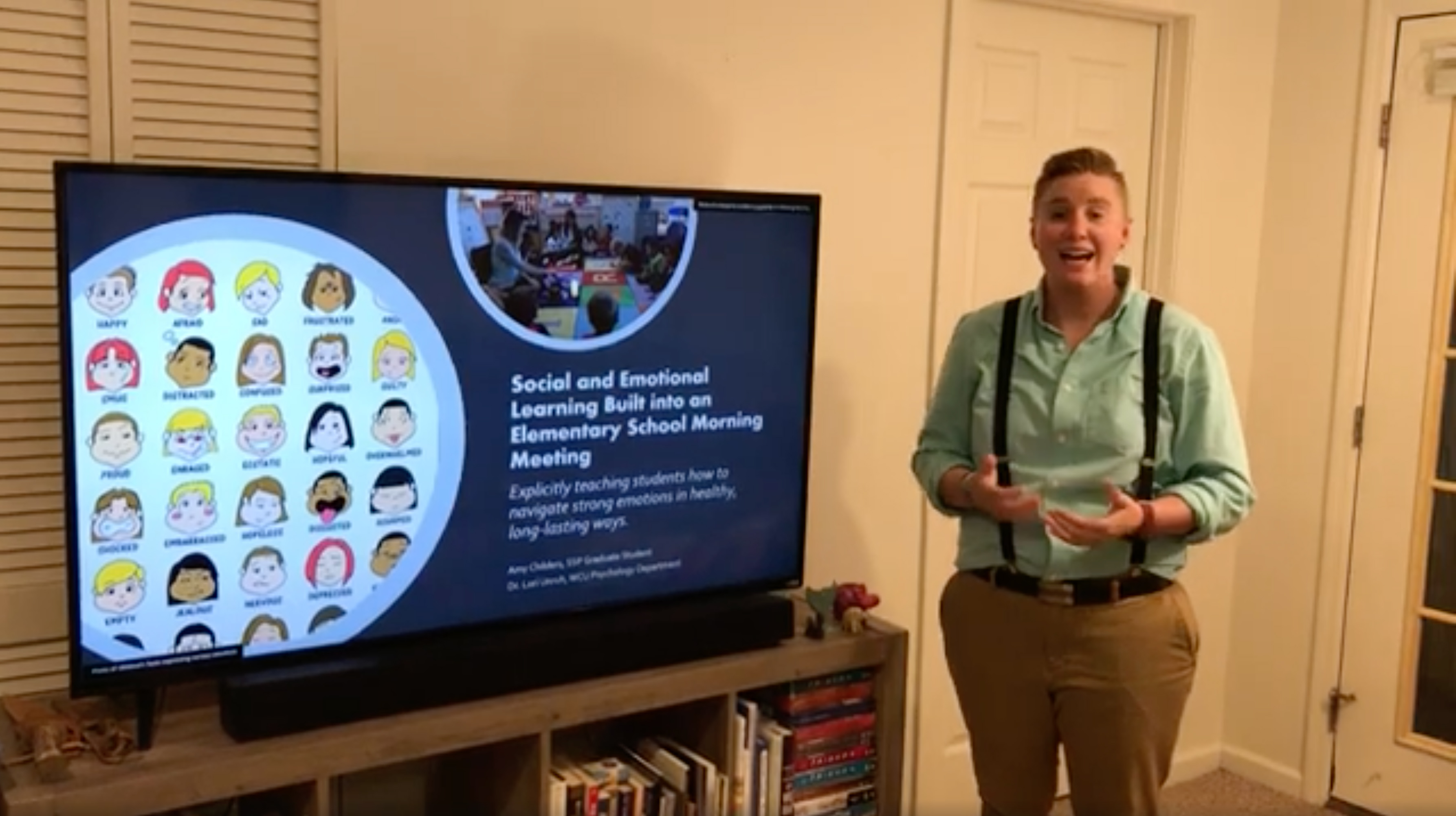Turn It Up - WWCU-FM has growth spurt with new tower, expanded reach
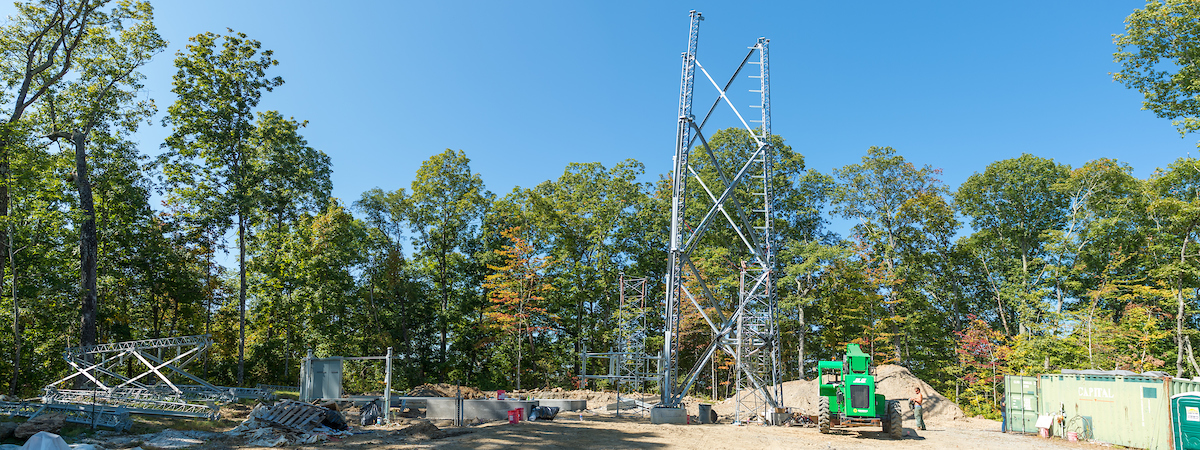
At 4,061 feet above sea level, the view from Western Carolina University’s new radio tower atop Brown Mountain in Jackson County is as vast and unobstructed as one would imagine.
And the sound at such height? Even better. There is none, save for nature’s hum. But don’t let the soothing silence fool you.
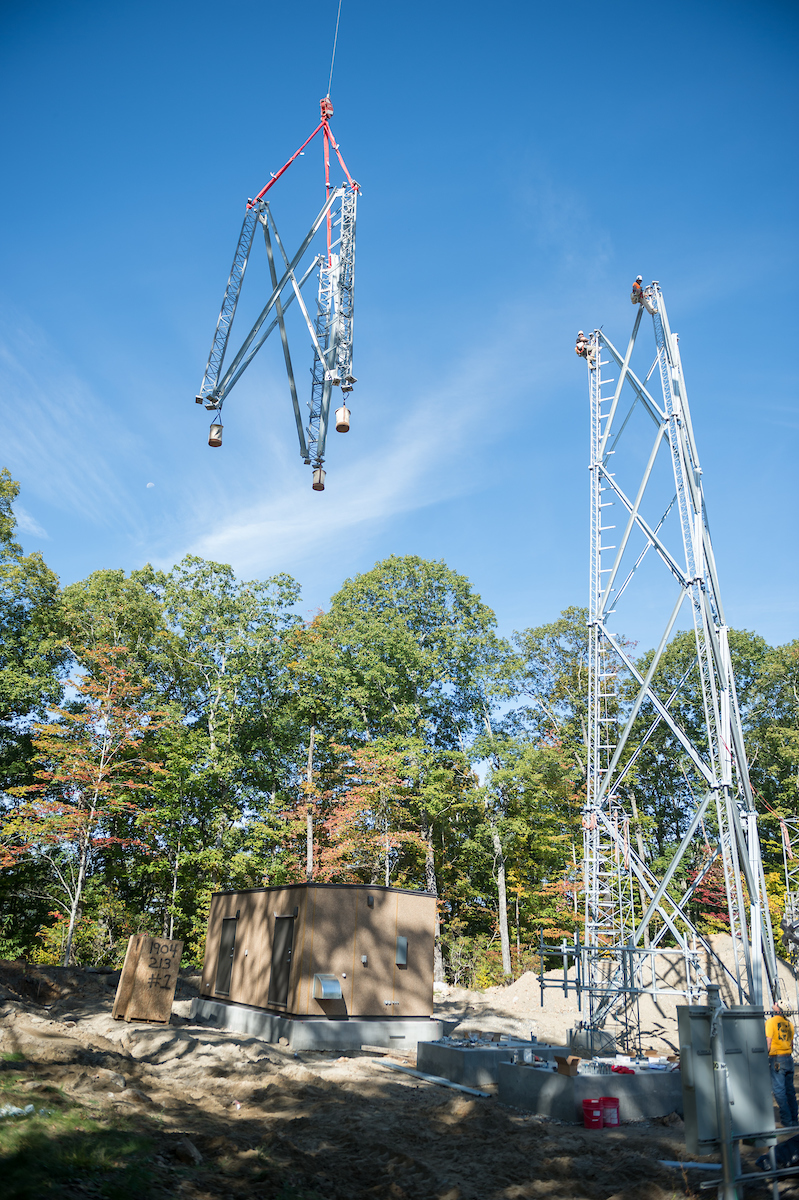
Radiating from the antenna of the new 180-foot self-supporting tower will be the inaudible transmission of the audibles of life: news, weather, sports, music and more, racing at the speed of sound from WCU’s radio station transmitter to the more than 122,000 potential listeners across four counties in Western North Carolina, parts of northern Georgia and up to Clingmans Dome in Tennessee. Finally — after an 11-year process — WWCU FM soon will be able to broadcast over the region’s majestic mountains, which, while glorious in stature, have impeded the station’s ability to expand its coverage, until now.
“I’m thrilled from the standpoint it will let our students, faculty and staff for the first time reach Franklin, it lets them reach Highway 441’s stretch through here, and it lets us reach in to the Great Smoky Mountains,” said Don Connelly, professor of communication in the Department of Communication and faculty adviser to WWCU. “The new tower gives the university a chance and our students a chance to reach this large area, which includes a whole lot of people we’ve never been able to reach before.”
The expanded coverage area includes 15 ZIP codes in their entirety — a population of 122,418 — and portions of five other ZIP codes. Connelly credits WCU economics professor Steve Ha with helping to determine the direction the programming should expand. Ha is an economics professor and economic development specialist in the College of Business who looked at the Federal Communications Commission-projected coverage area and completed a demographic breakdown of the population by gender, race and income.
“With that information, we then knew who lived in our new coverage area,” Connelly said. “Basically, the signal is going to go north through Cherokee into the national park, west to Bryson City, south of Franklin, to Cashiers and Highlands, areas we couldn’t reach before because of the mountains, and east to Waynesville. This will dramatically increase our coverage area.”
“The data was used to develop a plan for the type of programming that will be broadcast,” said Katerina Spasovska, head of the Department of Communication.
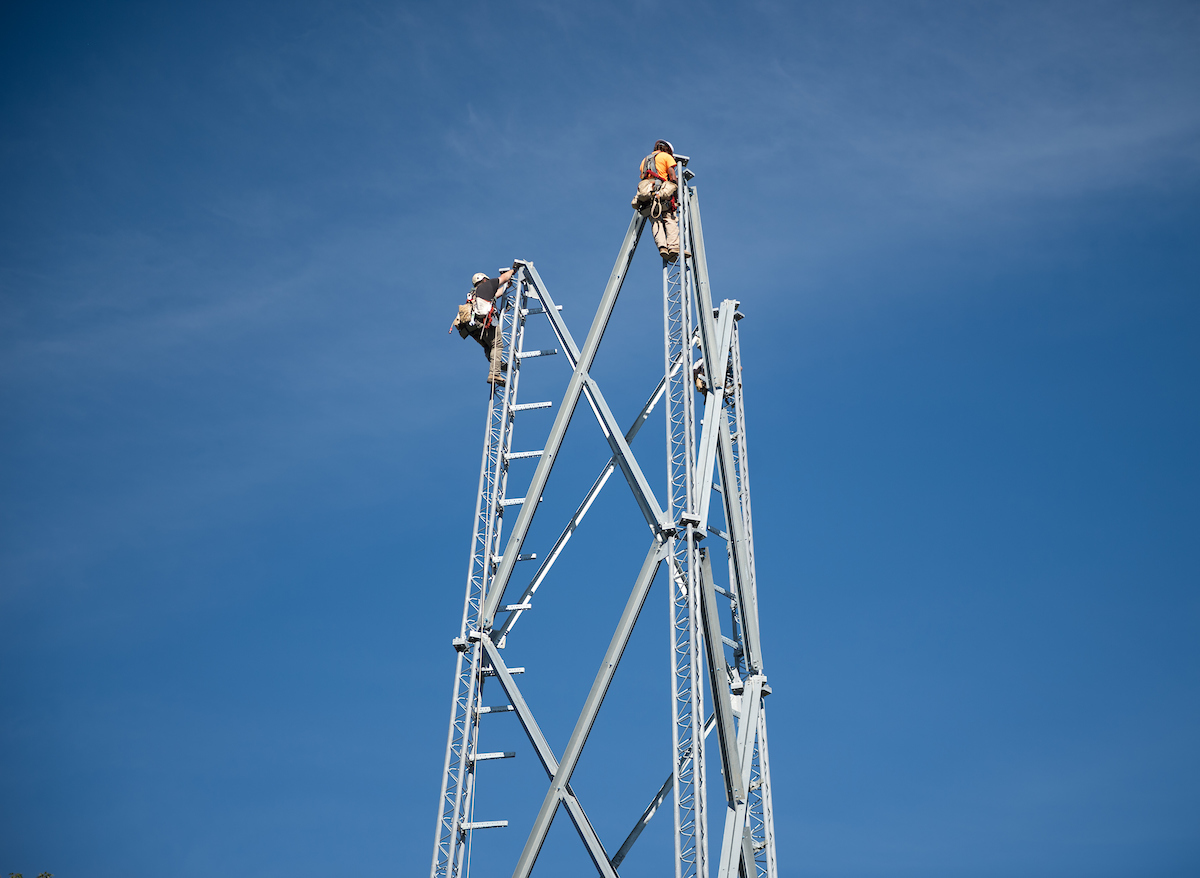
Also affecting the station’s extended reach will be its eventual switch from 90.5 FM to 95.3 FM, once the new site is operational. The new frequency, which the FCC awarded to WCU in 2015 after the university applied for it in February 2010, has a much larger coverage area to better serve the region and the WCU students as a professional learning laboratory.
Which is exactly what the station should be, Spasovska said. “It’s a great opportunity for students to have a hands-on experience. That’s what we want the communication program to be known for – that our students will learn how the industry operates and be ready to enter it as young professionals with knowledge and experience.”
Currently, the station broadcasts on 90.5 FM from its transmitter site on Cutoff Mountain and simulcasts that signal on 95.3 FM using a temporary 90-foot fiberglass mast with a small temporary antenna system at the Brown Mountain site. Its reach is about 43,000 potential listeners. Once the new tower site is operational, the fiberglass mast will be removed and the station will switch frequencies to 95.3.
“Sixty days after all construction is complete on 95.3, the university has a contract and FCC approval to transfer 90.5, which WCU currently owns, to its new owner, Blue Ridge Public Radio in Asheville. Until then, the university owns both radio stations,” Connelly said.
The tower was moved to the new site in stages, starting in early October, along with a new transmitter building. They were hauled to Brown Mountain on an Oshkosh truck, a large specialty flatbed truck, which took about two hours to drive the 7 miles from the parking lot of the Jackson County Recreation Complex, where the structures were being held, to the top of the mountain. A bulldozer parked near the top of Brown Mountain pulled the flatbed up the last one-quarter of a mile to the new site, which sits at nearly 3,900 feet above sea level.
What does an expanded coverage area mean for the station and the students who work there? The possibility of new and additional programming and the fact that more people can hear the good work students in the Department of Communication and other disciplines already are doing, Spasovska said. “It does open up the potential for changes in the curriculum in the future that will provide an opportunity for students to create more content,” she said. “What Don is doing with the public affairs programming is a good public service for the region and the university.”
For example, Connelly’s broadcast students worked with WCU’s Student Health Services to produce a 12-minute public affairs program on the flu — a long program is 20 minutes — that the station programmed to air throughout the week, rotating its time slot each day to ensure it reached different listeners. “That’s what we found to be most effective,” Connelly said. The students also have worked with Sylva’s Community Table, a Jackson County organization that works to alleviate food insecurity, to produce a program on food insecurity, which is a concern for many college students. In all, the students produce at least 10 “hard public affairs programs” a semester, he said.
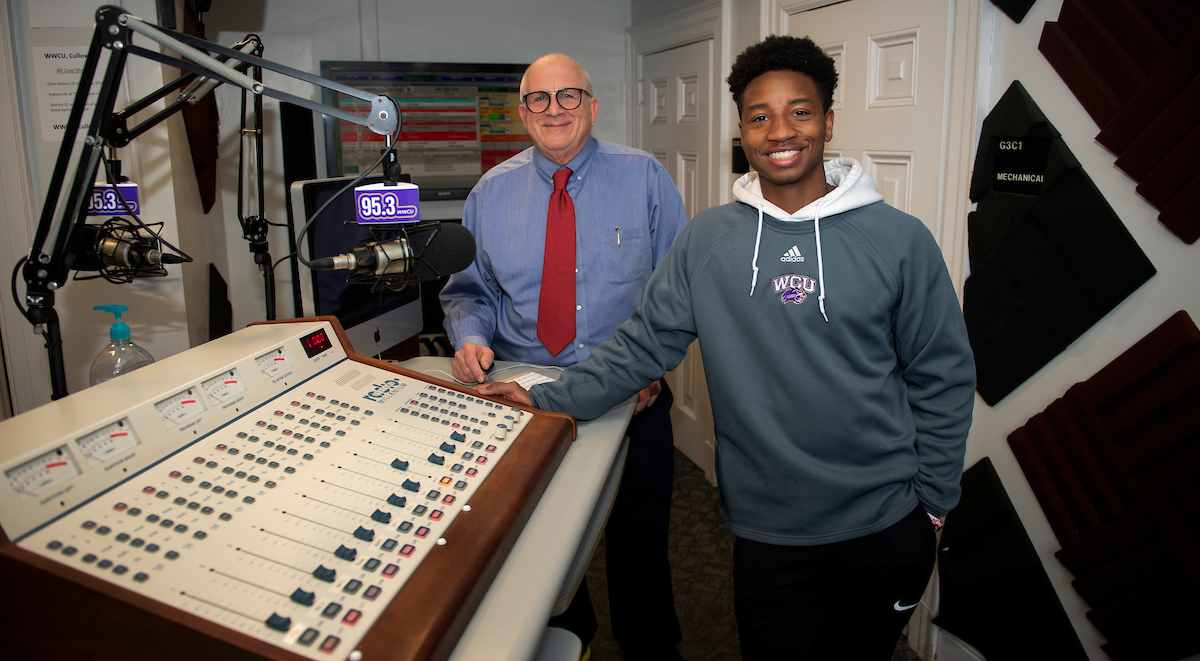
Today’s version of WCU’s radio station has come a long way since its inception in fall 1947, when three students approached university administrators with the idea to form a radio club in order to build a radio station. “They were interested in an activity. It was like being a ham radio operator,” Connelly said.
“And maybe it was a desire to catch up with the times, because the Carolinian was already in existence,” Spasovska said, referring to the Western Carolinian newspaper. “Radio was becoming the medium in the ’30s and ’40s.”
By spring 1948, the students had built a transmitter using World War II surplus military equipment and modified it to air on 550 AM, broadcasting as WCCA (Western Carolina Catamounts) from the office of geography professor T.A. Cathay, which was on the lower floor of the Joyner Building. “It was a carrier current radio station then,” Connelly said. “And the way they did it was they used the power lines on campus as the antenna. It was very low wattage, and you could only pick it up on campus. That’s how they got started.”
The students broadcast three evenings a week, complete with newscasts, programs and eventually coverage of two sports, Connelly said. “It was very 1940s style, all very formal. And that was pretty much it for the first year. That was kind of a big deal at the time.”
Although its call letters, frequency, location and number of potential listeners have changed over the course of its 72 years, WWCU has remained faithful in its mission to serve as a learning laboratory for its students and a source of information to an expanding community of listeners.
But most importantly, said Spasovska, “it is still operated by students.”
